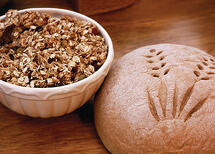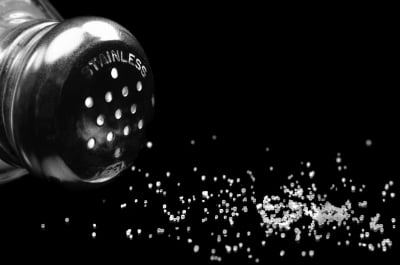With so many foods containing sodium and salt being one of America’s favorite flavorings it can be hard to figure out how to reduce sodium while maintaining quality. Salt is not a bad thing itself if the amount consumed is controlled. In fact, salt can be found naturally in foods such as milk, meat, shellfish, and even in small amounts in vegetables such as celery.
In all actuality, sodium plays a very integral part in muscle function, sending out nerve impulses, as well as maintaining proper fluid balance and blood pressure. The kidneys maintain a proper balance of sodium in your body by excreting any excess amounts you may have consumed in your urine. If the kidneys aren’t functioning as they should, the excess sodium enters into the blood stream and draws in fluid, resulting in increases in blood pressure. Some people are also, unfortunately, sensitive to sodium which makes them more likely to hold on to the sodium in their body, which results in fluid retention and high blood pressure as well.
On average, Americans consume 3,300 mg of sodium per day and about 90% of Americans are consuming too much. The majority of this sodium is not coming from the shaker either; it is coming from packaged foods and restaurants. For healthy individuals it is recommended that less than 2,300 mg of sodium is consumed. For those above the age of 51, African Americans, and those with or at a high risk of cardiovascular disease or hypertension keeping the sodium below 1,500 mg is recommended.
Salt isn’t the only thing that should be regulated though. It is also important to make sure you are consuming enough potassium, magnesium and calcium as increases in these minerals have  been shown to lower blood pressure and may play a role in preventing hypertension and cardiovascular disease. You can find potassium in a variety of meats, milk, fruits, and vegetables. Natural sources of magnesium include whole grains, legumes, nuts, and vegetables and calcium can be found in dairy products, fortified orange juice, kale, and even canned fish.
been shown to lower blood pressure and may play a role in preventing hypertension and cardiovascular disease. You can find potassium in a variety of meats, milk, fruits, and vegetables. Natural sources of magnesium include whole grains, legumes, nuts, and vegetables and calcium can be found in dairy products, fortified orange juice, kale, and even canned fish.
In my next post, I'll share 10 tips for reducing your sodium intake.
References:
Am J Hypertens. 2002 Aug;15(8):691-6.The effect of magnesium supplementation on blood pressure: a meta-analysis of randomized clinical trials. Jee SH, Miller ER 3rd, Guallar E, Singh VK, Appel LJ, Klag MJ.
Centers for Disease Control and Prevention (CDC). Usual sodium intakes compared with current dietary guidelines- United States, 2005-2008. MMWR Morb Mortal Wkly Rep. 2011 Oct 21; 60 (41)1413-7.
Salt shaker photo credit: Carlos Porto / FreeDigitalPhotos.net




